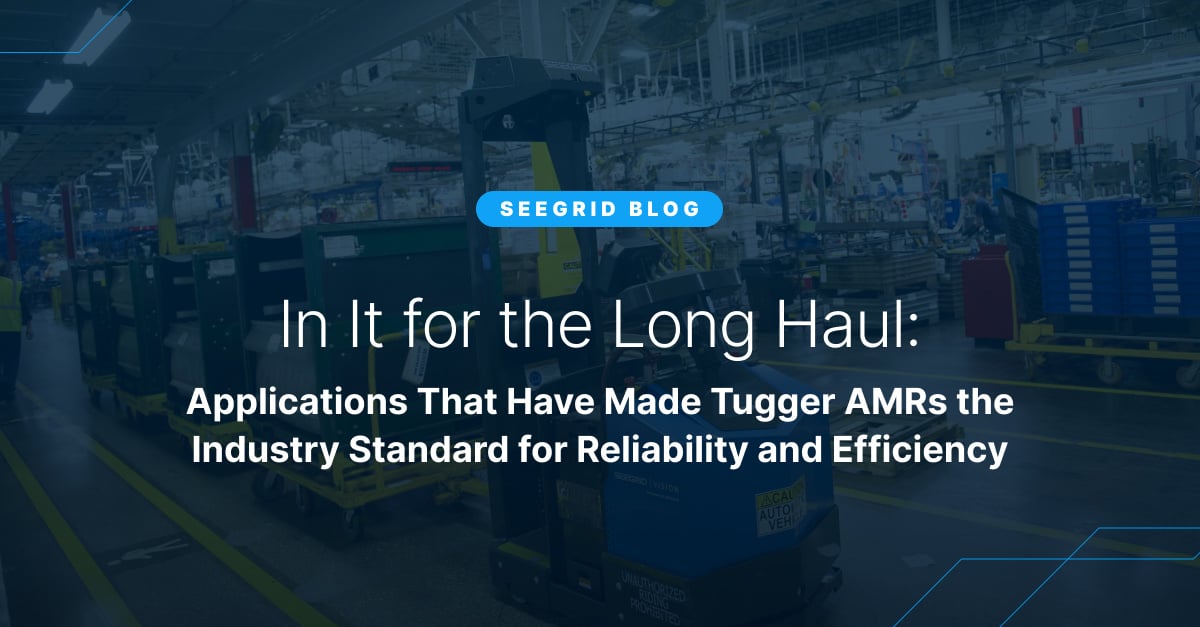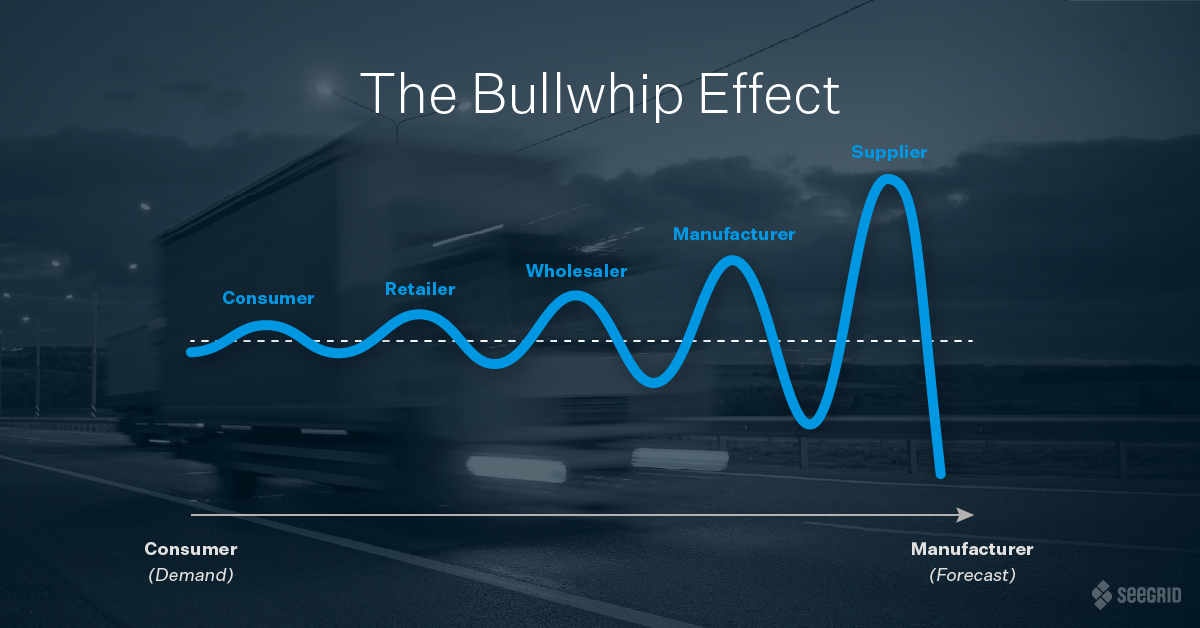Tow Tractors, or tuggers as they’re commonly known as, are ubiquitous in warehouses and manufacturing facilities today and are often tasked with moving heavy loads from one point to another for the traditional “milk run” logistics. The tugger’s simplicity and versatility have made them indispensable, efficiently handling low-touch tasks with manual operation. And with automation, they have the ability to take on an even larger role.
In this blog, we’ll explore the reasons why tugger AMRs were some of the first powered industrial vehicles to be made autonomous, and the applications that have kept them at the forefront of material handling automation—holding the industry standard for reliability and efficiency.
Let’s take a look at the criteria for what makes an application a good opportunity for automation, and why tugger AMRs are often the right tool for the job:

Seegrid's Tow Tractor AMR delivering parts to the manufacturing line at a Whirlpool facility.
- Complexity: Is the task I am trying to automate complex? Is it repetitive?
Most often, tuggers are tasked with mundane, point-to-point travel that has minimal complexity involved. Some applications involve hitching to and dropping off cart trains—which is a feature that modern tugger AMRs have been quick to add to their autonomous repertoire.
- Human Touchpoints: How many human touchpoints does the task have?
As common with tugger applications, the only human touchpoint is responding to variable conditions on the production floor like obstacles, uneven surfaces, or pedestrian traffic. Innovative tugger AMRs, like Seegrid Tow Tractor, are proven to be equipped for the task and can respond to and navigate changing environments.
- Frequency: How often is the task completed? Is it done in regular intervals?
Tuggers are the unwavering workhorses of warehouses and manufacturing environments and most of their routes are completed dozens of times a day—completed on predetermined schedules or as requested when needed
Why automate now?
We’ve established that tugging applications are ideal for automation. Let's take a look at the factors that have secured them as an industry standard for autonomous material handling today.
Safety
First and foremost, safety is paramount in any workplace. AMRs bring a host of safety advantages—from collision avoidance to enhanced monitoring capabilities. Autonomous solutions mitigate the risks associated with human error to ensure a safer working environment. With Seegrid’s Tow Tractor AMR, its pioneering primary and secondary sensors, as well as optional reverse sensing, ensure safe operation throughout dynamic warehousing and manufacturing environments. This combination of cutting-edge sensors are designed for autonomous vehicles to successfully operate in facilities that require high volume PIT and pedestrian traffic.
Efficiency
When efficiency and predictability are key, facilities can rely on automated tuggers to provide guaranteed on-time delivery, every time.From streamlining material flow to reducing bottlenecks and optimizing processes for maximum productivity, their reliability is unwavering. In the world of labor shortages, autonomous tuggers are always available and ready to complete the task at hand, eliminating the concern for workforce scarcity or inadequate operator training.

Seegrid tugger AMRs hauling large, heavy loads across huge facility floors.
Low Risk, High Reward
As we observe tuggers in facilities today, they are most commonly seen performing simple, low-touch point-to-point transit multiple times per day. With the implementation of AMR technology, the risk of failure and human error performing these tasks is significantly reduced, enabling operational benefits to be quickly experienced and seen in boosted customer ROI.
Top 5 Most Common Applications for Tugger Automation
Let's explore some of the top warehousing applications where autonomous tuggers truly shine:
-
Long Hauls
Moving large quantities of goods over long distances is the type of mundane work that tugger AMRs excel at. They effortlessly navigate warehouses to transport goods from one end to the other, and by autonomously managing long-haul tasks, they provide the ability to enable human workers to focus on more complex, cognitive, and value-added tasks.
-
Replenishment
Keeping stow buffers stocked with inventory is one of the primary uses of tuggers in modern warehouses. Using autonomous tuggers for these applications helps refocus manual labor to more value-added tasks and streamlines material flow to ensure that you have material and inventory where you need it, when you need it.
-
Parts-to-Line
In manufacturing environments, the timely delivery of parts and materials to production lines is critical for maintaining operational efficiency, especially in today’s era that is prone to worker shortage and retention problems. Manual transportation of materials to these lines often falls short due to delays, resulting in inconsistent material flow and productivity loss which are key components to industry ROI.
-
Cross Docking
Efficient movement of goods between shipping, receiving, and staging areas is essential for both manufacturing and warehousing operations. By integrating AMRs into your warehouse management system, you can dispatch tugger AMRs to get inbound materials to their next destination on time, every time.
-
Dunnage (Garbage)
Moving garbage from one part of a facility to another is by no means a glorious task, but it is vital when it comes to keeping facilities clean and organized. Relying on tugger AMRs to perform dunnage runs immediately helps repurpose manual labor on impactful, cognitive tasks that cannot be fulfilled with automation.
Embracing the Future of Autonomous Material Handling
Tugger AMRs represent one of the biggest automation successes to date in warehousing and manufacturing facilities. Their combination of predictability, safety, reliability, and efficiency has led to near universal adoption—and rapidly growing fleets are working on facility floors at some of the largest and most respected companies in the world. Are you ready to start your automation journey? We can help. Explore one of the most trusted tuggers on the market today and let your journey to automation success begin with Seegrid.






